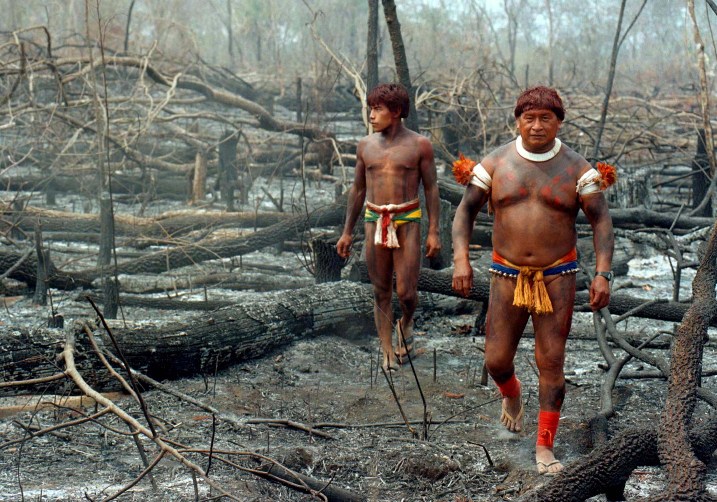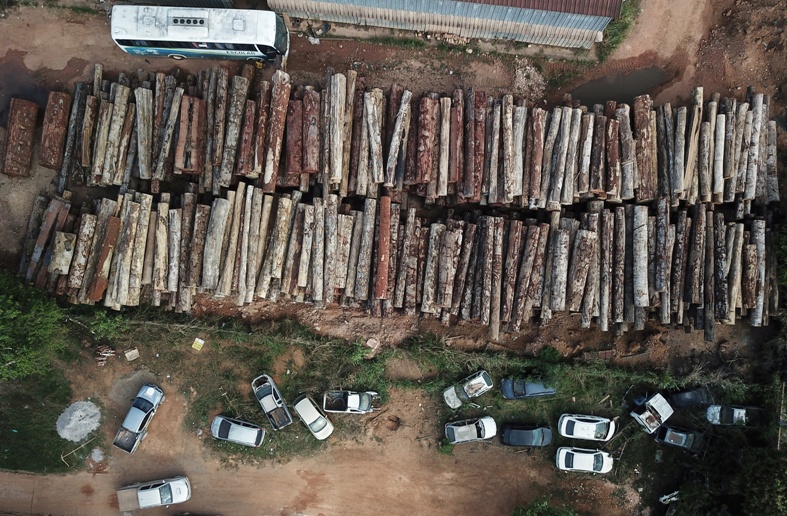Justin Adams of the Tropical Forest Alliance says durable change will only come when companies graduate from individual feelgood efforts and engage in the messy, hard work of collective action
By 2030 a global population swollen by a billion more people will escalate demand for agricultural goods – soybeans, cattle, palm oil, pulp, rubber and cocoa – produced in tropical regions. If the past is any indicator, one casualty of growth will be trees. Since 2010 our hunger for commodities has eradicated roughly 50m hectares of primary forest, an annual loss equivalent of Belgium.
Trees aren’t the only assets destroyed each day. Deforestation sacrifices water security. Its erosion silts up hydropower. It devastates biodiversity, erasing potential medicinal breakthroughs and natural pollination. Smoke from burning chokes lungs in distant cities. Worse, forest clearing emits CO2 instead of acting as the global carbon sink they should be, accelerating climate change.
Deforestation exacts a catastrophic human toll, from displaced tribes and impoverished farmers, to stressed wholesalers and conflicted aggregators
In short, deforestation exacts a catastrophic human toll. The pain ripples up supply chains from frontier roots among displaced tribes and impoverished farmers, to stressed wholesalers, anxious traders, and conflicted aggregators. Ultimately it leaves brands – corporate names behind burgers and chocolate bars and shampoo and phone cases – exposed to operational, financial and reputational risks.
As 2019 fires burned across the tropics, corporate executives faced questions from customers, shareholders, and employees. Outside, civil society becomes less civil. Social activists and environmental advocates trace products to forest origins, and rightly demand transparency. Negative press, protests, and litigation imply guilt by association, diagnose “business as the problem”, and prescribe boycotts as the solution.
To be sure, finger-pointing has proven effective in ratcheting up pressure on corporations to do better. It has nudged high-profile companies to increase transparency and clean up supply chains. But it is a blunt instrument and we’re seeing diminishing returns. There’s only so much business leaders – or for that matter NGOs, donors, lenders and governments – can do all by themselves.

For the last decade these parties mostly did try to go it alone, taking individual action: calling on a nation to crack down, funding a donor pilot project, seeking carbon finance for a forest, launching an NGO attack, holding a company accountable. Such linear approaches did yield praiseworthy outcomes, such as Norway and Guyana’s pay-for-performance agreement, or Brazil’s moratorium, which shifted soybean production onto already-degraded pasture.
Yet all these combined measures utterly failed to turn the global tide. Worse, the unilateral and top-down focus reveal a dangerous dynamic rising between buyers in the north and producers in the south.
The reality is that half of forests cleared for agriculture is illegal. Some threats are less cocoa growing than illicit coca production. Public corruption undermines consumer faith. Online competition weakens consumer will; many claim they’ll pay premiums for deforestation-free goods from the Amazon, then click low-priced tainted options on Amazon.com. China and other emerging economies (just starting to apply sustainability criteria) provide a ready outlet for dirty forest commodities. Even clean wins leave a bitter taste: environmental victory for some is for others neo-colonialist hypocrisy.
Unless the north can genuinely enable alternative economic opportunities, the global chasm between healthy field and hungry fork will widen
Let’s take a hard look in the mirror. Converting forests for agriculture has driven economic development for rural communities not only in Brazil, Gabon or Indonesia today, but across Europe and the US over centuries. It’s rather convenient for rich countries to inform forest countries that the scientific consensus now means their primary forests simply can’t be cleared. Unless the north can genuinely enable alternative economic opportunities, unless its consumers pay more to be deforestation-free, unless its governments apply the same restrictive codes to its own temperate forests, the global chasm between healthy field and hungry fork will widen.
Thankfully, such introspection has begun. Each year we find more tools that closely monitor and better assess what’s happening where beneath the tropical canopy. Stakeholders keep identifying more inclusive, transparent, and forest-positive models that can shift the current dynamic. Indeed, never before have we had a better grasp of how much is needed, at every level, to turn the corner on deforestation.
As we cross the 2020 threshold, truly durable and resilient solutions can only emerge as forest stakeholders learn to work together, graduating from feel-good individual efforts to the irreversible transformation that comes through collective action.

Collective action does not absolve companies of their responsibilities or commitments. To the contrary, it demands they deepen engagement to work beyond their own individual sourcing. The limits of voluntary corporate action require us to match demand-side measures (eg regulation) in market countries with stronger capacity and enforcement in producer countries, with financial incentives for green supply chains.
Our collective action agenda may sound novel or abstract. In fact, it is taking shape prominently under United Nations directives, and quietly among forest stakeholders.
Deforestation rationales are embedded in UN Sustainable Development Goals. Primary forests capture carbon (SDG13) and generate income (SDG1), they secure nourishment (SDG2), freshwater (SDG6), medicinal plants (SDG3), biodiversity (SDG15), and meaningful work (SDG8). What’s surprising is that the last, understated and often overlooked one, SDG 17, matters more than all of them put together. SDG17 calls on parties to bind their diverse ambitions under new global partnerships for development, leveraging finance, capacity-building, systemic issues, technology, and trade.
Collective action is neither dramatic nor glamourous, it offers nothing but a hard, uphill slog against headwinds. But it’s worth it
In parallel, the Tropical Forest Alliance (TFA) exists to remove deforestation from supply chains. We will all collectively (not just companies) fall short of the original 2020 milestone. Yet as a neutral broker for some 160 committed governments, NGOs and companies, TFA’s platform is proud to have enabled conditions at the centre where collective action can gain traction.
Multiple NGOs and companies now partner with local governments at the landscape level, where parties decide where to expand production and where to conserve tropical forests. New national pacts and partnerships on dairy, beef and palm oil have been launched in Colombia. Partnerships in the Africa Palm Oil Initiative bind 10 nations and leading companies to a regional pledge that steers palm oil development (a native tree and food staple in much of Africa) to degraded lands and supports smallholder inclusion. Indonesian partnerships across the supply chain and with strong government action have helped reduce deforestation more than 30% in the last two years compared with the 2002-2016 average.
To accelerate progress against deforestation beyond 2020, collective action takes three forms. Under shared action, individual or institutional goals remain intact, but stakeholders step out of their comfort zones to seek out new partners with whom to realise these outcomes. Next, a community of purpose helps competing interests transcend their polarised rhetoric to develop solutions. Finally, through high-impact partnerships trade or commodity associations work through jurisdictional and national coalitions to ensure accountable governance.

Collective action is neither dramatic nor glamourous. It means embracing points of tension, loosening ideological rigidity to achieve meaningful results. As elusive win-win daydreams soften into messy trade-offs amidst mutual suspicion, collaboration offers nothing but a hard, uphill slog against headwinds.
But it’s worth it. By working through the wrenching process of honest disagreement, of open debate, of accepted conflicts, of sticking around the table to forge a compromise framework no one loves but all can accept, something valuable starts to take root: trust.
Trust is the glue that unlocks human progress. Without trust, primary forests will continue to be sacrificed. With it, we can slow, stop, and even start to reverse tropical deforestation, entering a decade of more equitable and responsible development from field to fork.

Justin Adams is the executive director of the World Economic Forum’s Tropical Forest Alliance
This article is part of our in-depth Decade of Delivery commentary from sustainability leaders. To view all articles, please see our January 2020 digital magazine.
#deliverydecade biodiversity loss deforestation Amazon SDGs Indigenous People Tropical Forest Alliance

